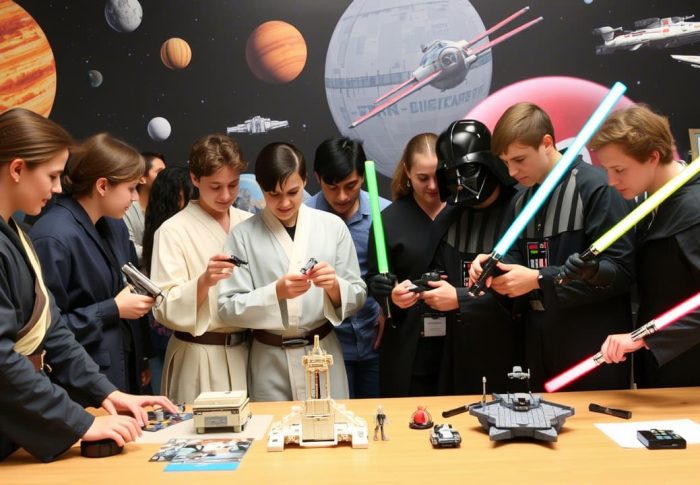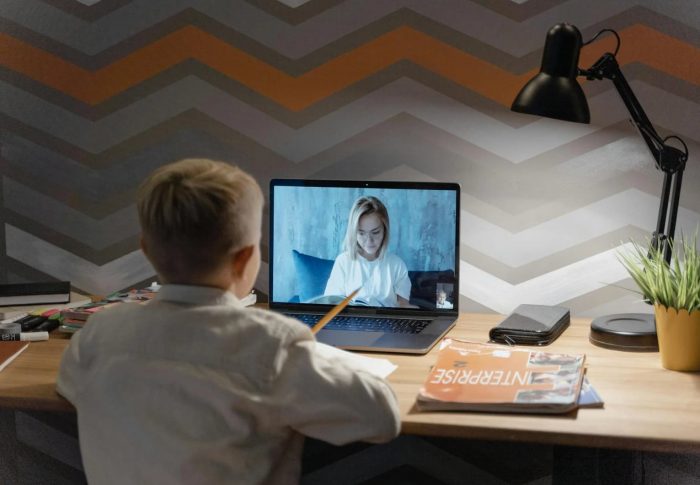
The Evolution of Distance Learning: Trends and Predictions for the Next Decade
In an era where technology and education converge, distance learning has emerged as a pivotal force in reshaping the educational landscape. As we stand on the cusp of a new decade, this article delves into the transformative journey of distance learning, unraveling the latest trends that are sculpting its future. We will also cast a forward-looking eye on the horizon, offering evidence-based predictions that will illuminate the path for learners, educators, and institutions in the coming years. Join us as we navigate the contours of this digital revolution, charting a course through the innovations and challenges that will define the next chapter in the story of distance learning.
The Impact of Technology on Distance Learning
The trajectory of distance learning has been inextricably linked with the march of technology. In its nascent stages, the limitations of available technology restricted distance learning to static correspondence. However, as technological capabilities advanced, so did the possibilities for distance education. Here are key technological milestones that have shaped distance learning:
- The Internet and World Wide Web: The introduction of the internet opened up new avenues for communication and information sharing, leading to the creation of the first online courses.
- Learning Management Systems (LMS): Platforms like Blackboard and Moodle provided educators with tools to create structured and interactive courses, allowing for the management of learning materials and student progress.
- Multimedia and Interactive Content: The integration of videos, animations, and simulations has transformed static learning materials into dynamic and engaging content.
- Mobile Learning: The proliferation of smartphones and tablets has facilitated anytime, anywhere learning, further breaking down barriers to education.
- Artificial Intelligence (AI) and Machine Learning: These technologies are personalizing learning experiences by adapting content to individual learning styles and providing real-time feedback.
- Virtual and Augmented Reality (VR/AR): Immersive technologies are creating new dimensions of learning by simulating real-world environments for practical learning experiences.
As we look towards the future, we can expect technology to continue playing a transformative role in distance learning. The integration of AI and advanced analytics is predicted to refine the personalization of learning, making it more adaptive and responsive to individual learner needs. The growth of VR/AR is set to offer even more immersive learning experiences, potentially revolutionizing fields like medical and military training. Moreover, the continued expansion of high-speed internet access and mobile technologies will likely make distance learning even more accessible and prevalent around the globe.
In the next decade, we anticipate that distance learning will not only supplement but, in some cases, supplant traditional educational models, offering a viable and often preferable alternative. As the digital divide narrows and technology becomes more inclusive, distance learning stands poised to democratize education on an unprecedented scale.
The Intersection of Gaming and Online Learning: The Case of CSGO Gambling
The digital realm has not only revolutionized education but also transformed entertainment and leisure activities. An interesting crossover is seen in the world of online gaming, particularly with phenomena like CSGO gambling site. This activity, which involves betting on the outcomes of matches in the popular game Counter-Strike: Global Offensive, exemplifies the convergence of gaming, economics, and the use of digital platforms. While seemingly unrelated to education, the underlying technology and psychological principles of engagement and risk-reward mechanisms are remarkably similar. Understanding such intersections can provide insights into how digital environments captivate attention and foster user interaction, aspects that are increasingly relevant to educational technology developers.
As we look towards the future, we can expect technology to continue playing a transformative role in distance learning. The integration of AI and advanced analytics is predicted to refine the personalization of learning, making it more adaptive and responsive to individual learner needs. The growth of VR/AR is set to offer even more immersive learning experiences, potentially revolutionizing fields like medical and military training. Moreover, the continued expansion of high-speed internet access and mobile technologies will likely make distance learning even more accessible and prevalent around the globe.
In the next decade, we anticipate that distance learning will not only supplement but, in some cases, supplant traditional educational models, offering a viable and often preferable alternative. As the digital divide narrows and technology becomes more inclusive, distance learning stands poised to democratize education on an unprecedented scale.
The Rise of MOOCs and Online Platforms
The landscape of distance learning has been dramatically reshaped with the emergence of Massive Open Online Courses (MOOCs) and other online learning platforms. MOOCs, which offer unrestricted participation and open access via the web, have surged in popularity due to their ability to provide free or low-cost education to a global audience. Platforms like Coursera, edX, and Udacity have partnered with top universities to deliver courses across a multitude of subjects, from computer science to philosophy.
These platforms have revolutionized the role of distance learning in education by:
- Democratizing Access: MOOCs have broken down barriers to education, enabling people from all walks of life to access high-quality courses from prestigious institutions.
- Encouraging Lifelong Learning: With the flexibility to learn at their own pace, individuals can acquire new skills or enhance existing ones, irrespective of their age or career stage.
- Facilitating Career Advancement: Many MOOCs offer certification upon completion, which can be instrumental in helping learners advance or pivot in their professional lives.
- Supporting Blended Learning: Traditional institutions are increasingly incorporating MOOCs into their curricula, offering a blended approach that combines online and in-person instruction.
The next decade is likely to see an expansion of MOOC offerings, with a growing emphasis on micro-credentials and specialized programs designed to meet the evolving needs of the job market. Additionally, we can expect advancements in technology to enhance the interactivity and personalization of MOOCs, making distance learning an even more engaging and effective educational experience.
Distance Learning in the COVID-19 Era
The COVID-19 pandemic has served as a catalyst for an unprecedented surge in distance learning. Educational institutions around the world were compelled to rapidly adapt to remote teaching methods to ensure continuity of education. This shift, although initially disruptive, has underscored the flexibility and resilience of distance learning frameworks.
Institutions have adapted to the pandemic by:
- Expanding Online Offerings: Schools and universities have significantly increased the number of courses available online, often utilizing synchronous (live) and asynchronous (pre-recorded) formats.
- Investing in Technology: There has been a concerted effort to invest in digital tools and platforms to support online learning, including LMS, video conferencing software, and digital assessment tools.
- Training Educators: Teachers and professors have received training in digital pedagogies to effectively deliver content and engage with students in a virtual environment.
- Supporting Students: Institutions have implemented support systems to assist students with the transition to online learning, addressing challenges such as internet access, digital literacy, and mental health.
As we move beyond the pandemic, it is anticipated that many of these changes will become permanent fixtures of the educational landscape. The integration of hybrid learning models, which combine online and in-person instruction, is expected to grow, offering students greater flexibility and personalized learning pathways. The experience of the COVID-19 era is likely to drive further innovation in distance learning, with an emphasis on creating more resilient and accessible educational systems for the future.
The Role of Artificial Intelligence in Personalized Learning
Artificial Intelligence (AI) is at the forefront of revolutionizing distance learning by offering personalized educational experiences. AI-driven systems are capable of analyzing student data to tailor content, predict performance, and provide customized support. Here’s how AI is enhancing distance learning:
- Adaptive Learning Platforms: These platforms use AI to adjust the difficulty of tasks based on student performance, ensuring that each learner is challenged at their own level.
- Intelligent Tutoring Systems: AI tutors provide one-on-one instruction, offering explanations, guidance, and feedback that are specific to individual learning styles and needs.
- Automated Grading: AI can quickly grade assignments and exams, giving students immediate feedback while freeing up instructors to focus on more complex teaching tasks.
- Learning Analytics: By analyzing data on student interactions with course material, AI can help educators identify who might need extra help and what topics need more coverage.
The integration of AI into distance learning is expected to deepen over the next decade, leading to more nuanced and effective personalization. Predictions for the future include AI becoming more adept at recognizing emotional cues to better support students’ mental well-being and further customization of learning paths to suit individual career goals.
Virtual Reality and Augmented Reality in Education
Virtual Reality (VR) and Augmented Reality (AR) technologies are set to transform distance learning by providing immersive and interactive educational experiences. These technologies enable students to explore concepts in a three-dimensional environment, making learning more engaging and memorable. Current and potential uses include:
- Simulated Laboratories: VR can simulate laboratory environments, allowing students to conduct experiments without the need for physical resources.
- Virtual Field Trips: AR and VR can transport students to historical sites, museums, or even outer space, providing enriching experiences that would be impossible or impractical in the real world.
- Medical and Technical Training: VR provides a risk-free platform for medical students to practice surgeries and for technical students to gain hands-on experience with machinery.
- Language and Cultural Immersion: Language learners can use VR to immerse themselves in environments that mimic the countries of the languages they’re studying, enhancing their understanding of both language and culture.
Over the next decade, we can anticipate broader adoption of VR and AR in education, with advancements making these technologies more affordable and accessible. The development of more sophisticated content and the integration of AI with VR/AR experiences will likely lead to even more personalized and effective learning opportunities. As these immersive technologies become mainstream, they will play a crucial role in overcoming the limitations of traditional distance learning, providing students with practical, hands-on experience in a virtual setting.
The Shift Towards Competency-Based Education
Competency-based education (CBE) is a growing trend in distance learning, prioritizing the mastery of skills over time spent in a classroom. Unlike traditional education models, CBE allows students to progress at their own pace once they demonstrate proficiency in a subject area. This approach is particularly well-suited to online learning environments where learners have varied schedules and learning styles. Key features of CBE include:
- Personalized Learning Paths: Students can focus on the skills they need to develop, moving forward once they’ve demonstrated competence.
- Real-World Relevance: CBE often involves practical tasks that simulate real-life challenges, making the learning experience more applicable to job settings.
- Flexible Assessment: Evaluations are based on demonstrating knowledge through projects, portfolios, or exams, rather than accumulating credit hours.
The integration of CBE into distance learning curriculums is transforming education by aligning it more closely with industry needs and learner preferences. In the next decade, we can expect CBE to become more prevalent as educational institutions and employers increasingly recognize the value of skill-based learning.
The Integration of Social Learning in Online Education
The incorporation of social learning into online courses and platforms is redefining the solitary nature of distance learning. Social learning theory suggests that people learn from one another, via observation, imitation, and modeling. Online education platforms are increasingly facilitating this by including collaborative and social elements such as:
- Discussion Forums: Online forums allow students to discuss course materials, share insights, and ask questions, fostering a sense of community.
- Peer Assessments: Learners evaluate each other’s work, providing feedback and gaining different perspectives on the subject matter.
- Group Projects: Virtual workspaces enable learners to collaborate on assignments, mirroring teamwork in a traditional classroom or workplace.
The importance of collaborative and social learning elements cannot be overstated, as they not only enhance the learning experience but also help develop critical soft skills such as communication and teamwork. As we look to the future, these interactive components are expected to become more sophisticated, leveraging technology to create even more engaging and supportive online learning communities.
Challenges and Criticisms of Distance Learning
Distance learning has been a game-changer for many, but it’s not without its challenges and criticisms. Some of the most pressing issues include:
- Accreditation and Recognition: Concerns persist regarding the accreditation of online programs and the recognition of qualifications by employers and traditional institutions.
- Quality of Education: Critics argue that the quality of education can suffer in online settings due to a lack of face-to-face interaction and hands-on experiences.
- Access and Equity: Despite its potential for inclusivity, there remains a digital divide, with students in remote or impoverished areas often lacking the necessary resources or connectivity to participate effectively.
- Student Engagement: Keeping students motivated and engaged without the physical presence of a classroom environment can be challenging for educators.
- Academic Integrity: Ensuring the authenticity of student work and preventing cheating in an online context is a significant concern for institutions.
As we advance, addressing these criticisms will be crucial in refining distance learning methodologies and ensuring their acceptance and effectiveness in the educational ecosystem.
The Future of Hybrid Learning Models
The next decade will likely see a significant evolution in hybrid learning models, which blend online and in-person instruction. Here’s what we can expect:
- Increased Adoption: Hybrid learning will become more commonplace, with institutions recognizing the value of combining the flexibility of online learning with the benefits of face-to-face interaction.
- Customized Learning Experiences: Technology will enable more personalized hybrid models, allowing students to choose when to attend in-person sessions and when to engage online.
- Enhanced Collaboration Tools: Advancements in collaborative technologies will make online components of hybrid learning more interactive, mirroring the social aspects of traditional classrooms.
- Focus on Outcomes: Hybrid models will increasingly emphasize learning outcomes, with a shift towards competency-based approaches that validate skills regardless of how they are acquired.
Hybrid learning models represent the future of education, offering a balanced approach that caters to diverse learning preferences and schedules while maintaining the quality and structure of traditional education.
The Role of Big Data in Shaping Educational Strategies
The emergence of big data analytics has become a cornerstone in refining distance learning. Educational institutions now leverage vast amounts of data to enhance student learning outcomes and tailor educational strategies to individual needs. Big data’s role in distance learning includes:
- Personalized Learning Experiences: By analyzing student interaction with online materials, educators can personalize content delivery, catering to different learning styles and paces.
- Predictive Analytics: Data analytics can predict student performance, allowing for early intervention strategies to help at-risk students.
- Curriculum Development: Insights from data help in designing curricula that align with student needs and industry trends, ensuring relevant and up-to-date course offerings.
- Student Retention Strategies: By identifying patterns that lead to dropouts, institutions can develop targeted retention strategies to keep students engaged and enrolled.
In the next decade, big data is predicted to further revolutionize distance learning, with more sophisticated analytics tools providing deeper insights into student behavior and preferences. This will enable even more customized and effective educational strategies, driving success for both students and educational institutions.
Accessibility and Inclusivity in Distance Learning
The imperative of making distance learning accessible and inclusive cannot be overstated. As education moves increasingly online, ensuring that all learners, regardless of their physical abilities or socioeconomic status, can access quality education is a priority. Efforts to promote accessibility and inclusivity in distance learning include:
- Designing for Disabilities: Implementing universal design principles to create online content that is accessible to students with disabilities, such as captioning for videos and screen reader-friendly course materials.
- Bridging the Digital Divide: Initiatives to provide affordable devices and internet access to students in remote or underprivileged areas, ensuring they can participate in distance learning.
- Cultural Sensitivity: Developing content that is culturally inclusive and sensitive, reflecting the diversity of the global student body.
- Support Systems: Establishing robust support systems, including technical assistance and tutoring, to help all students navigate and succeed in the online learning environment.
Looking ahead, the trend is towards even greater inclusivity, with technology playing a key role in breaking down remaining barriers to access. The next decade will likely see an increase in targeted programs and partnerships aimed at supporting underrepresented groups, making distance learning a truly universal educational option.
The Globalization of Education Through Distance Learning
Distance learning has become a conduit for global education, enabling students from disparate geographical locations to access quality education without the constraints of physical borders. This trend has facilitated international collaboration among institutions, educators, and students, creating a diverse learning environment that reflects the interconnectedness of our world. The impact of distance learning on global education includes:
- Cross-Cultural Exchange: Students are exposed to diverse perspectives and can collaborate with peers from different cultural backgrounds.
- International Curriculum: Courses often incorporate global contexts, preparing students for the international aspects of modern careers.
- Partnerships Between Institutions: Universities worldwide are forming partnerships to offer joint programs, enhancing their educational offerings.
- Access to Global Expertise: Learners have the opportunity to be taught by leading experts from around the globe, regardless of their location.
The globalization of education through distance learning is not just expanding educational access but also fostering a more inclusive and culturally aware student body. As we progress into the next decade, we can expect this trend to continue, with more institutions joining forces to provide a truly global education.
Predictions for Distance Learning in the Next Decade
The landscape of distance learning is poised for significant transformations in the coming decade. Here are some key trends, technologies, and practices expected to shape the future of distance learning:
- Advanced Personalization: Leveraging AI and machine learning to deliver highly personalized learning experiences, adapting to individual learning styles and needs.
- Immersive Technologies: Greater integration of VR and AR in curricula, providing students with hands-on, practical experiences in a virtual environment.
- Blockchain in Education: Utilization of blockchain technology for secure and transparent verification of academic credentials and achievements.
- 5G Connectivity: The rollout of 5G networks will enable faster and more reliable internet connections, facilitating smoother online learning experiences.
- Growth of Micro-Credentials: The rise of short, focused courses that offer specific skills and competencies to meet the rapidly changing job market demands.
- Data-Driven Decision Making: Institutions will increasingly rely on big data analytics to inform educational strategies and improve student outcomes.
- Increased Accessibility: Continued efforts to make distance learning more accessible and inclusive, with a focus on addressing the needs of learners with disabilities and those from underserved communities.
- Focus on Soft Skills: Online courses will place greater emphasis on developing soft skills such as critical thinking, communication, and collaboration.
- Hybrid Learning Environments: A blend of online and traditional classroom learning will become the norm, offering flexibility and personalization.
- Global Networking: Distance learning platforms will facilitate international networking, providing students with global connections that can enhance their career prospects.
The Evolving Landscape of Distance Learning
As we reflect on the transformative journey of distance learning, it is evident that this educational model has not only adapted to the changing times but has also been a catalyst for innovation within the educational sector. The key points discussed highlight the significant role technology has played and will continue to play in shaping distance learning. From the early days of correspondence courses to the latest advancements in artificial intelligence and virtual reality, distance learning has consistently pushed the boundaries of what is possible in education.
Looking ahead, the potential long-term impact of distance learning on the educational landscape is profound. It has the power to democratize education, making it more accessible and inclusive, while also providing personalized learning experiences that cater to individual needs and learning styles. The rise of MOOCs, the adoption of hybrid learning models, and the integration of immersive technologies are just a few examples of how distance learning is evolving to meet the demands of a diverse global student population.
The COVID-19 pandemic has undoubtedly accelerated the adoption of distance learning, and many of the changes implemented during this period are expected to have lasting effects. The shift towards competency-based education, the integration of social learning, and the focus on accessibility and inclusivity will continue to shape distance learning strategies and policies.
As we look to the future, we can predict that distance learning will become even more integrated into the fabric of education. With the continued advancement of technology, the growth of micro-credentials, and the increasing importance of soft skills, distance learning is poised to offer a more connected, personalized, and responsive educational experience.
In sum, the evolution of distance learning is an ongoing process, one that promises to redefine the educational experience for students and educators alike. Its trajectory suggests a future where learning is not confined by physical boundaries, time constraints, or one-size-fits-all approaches, but is instead a dynamic and inclusive journey that meets learners where they are and helps them get to where they want to be.






